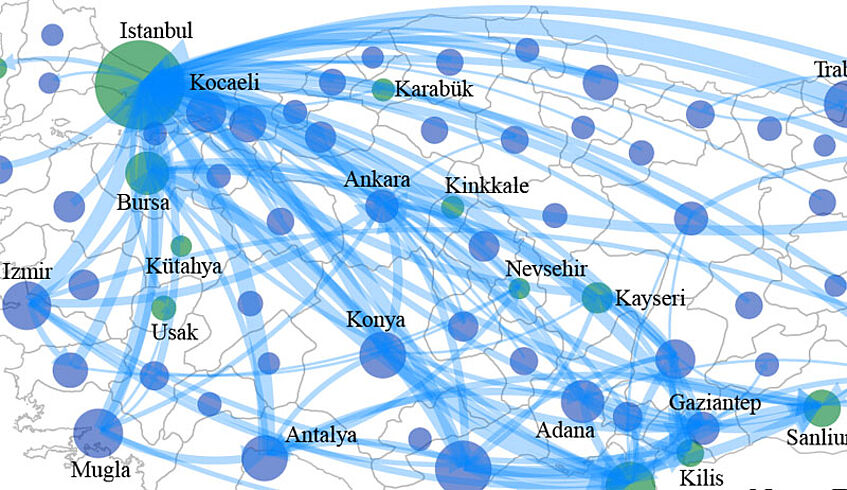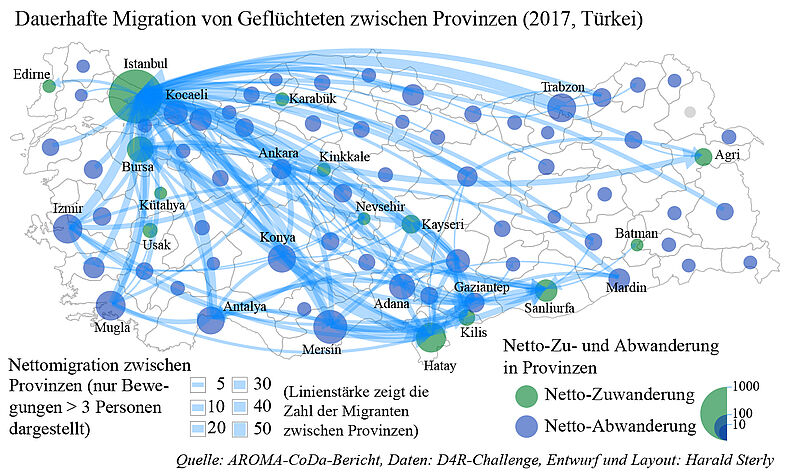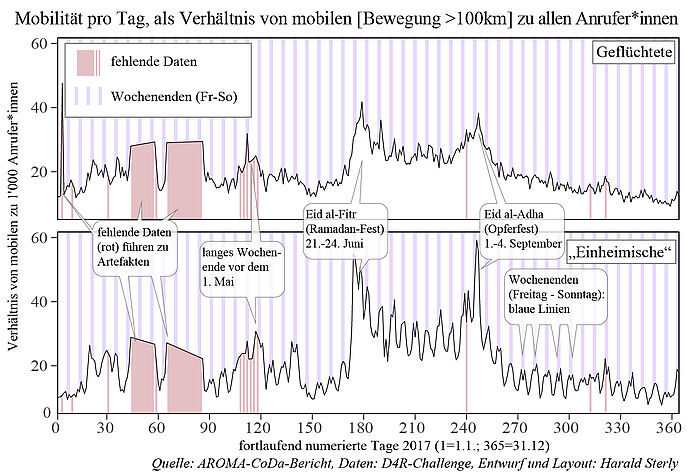
AROMA_CoDa: Assessing Refugees’ Onward Mobility through the Analysis of Communication Data
Project lead: Harald Sterly (IfGR, Universität Wien)
Project member: Patrick Sakdapolrak (IfGR, Universität Wien); Benjamin Etzold (BICC - Bonn International Center for Conversion); Lars Wirkus (BICC), Jacob Schewe (PIK - Potsdam Institute for Climate Impact Research); Carl-Friedrich Schleussner (Climate Analytics); Benjamin Hennig (University of Iceland); Vahit F. Kutluer (Save the Children Türkei)
Duration: 04/2018 – 08/2018 (Verlängerung beantragt)
Funded by: own funding; research within the frame „Big Data Challenge - Data for Refugees Turkey”, Türk Telekom (http://d4r.turktelekom.com.tr/)
Abstract
By analyzing the large dataset of anonymized mobile phone usage provided by Türk Telekom within the frame of the Big Data Challenge “Data for Refugees Turkey” the project AROMA_CoDa addresses the topic of onward or “secondary mobility” – that is refugees’ mobility within Turkey after the arrival at a first destination (e.g. refugee camps or smaller cities in Eastern Turkey). While we position the project in the theme of ‘social integration’, refugees’ secondary mobility is a cross-cutting topic directly related to challenges with regard to safety and security, health, education, and unemployment. The project has the following pbjectives:
- Mapping of spatial and temporal patterns of secondary mobility of refugees in Turkey: flows over time, spatial trajectories between most significant points of origin and destination, and identification of key mobility hubs.
- Understanding key drivers of spatio-temporal mobility patterns and in particular the impact of conflict dynamics (in Syria) and of fundamental refugee-related political decisions in Turkey and the European Union.
- Draw recommendations from the insights of 1. and 2. that are relevant for allocating resources and improving infrastructures for the temporary support and longer term integration of refugees at most significant places along the identified mobility trajectories; and communicate these results in comprehensive ways, e.g. through innovative visualizations.


